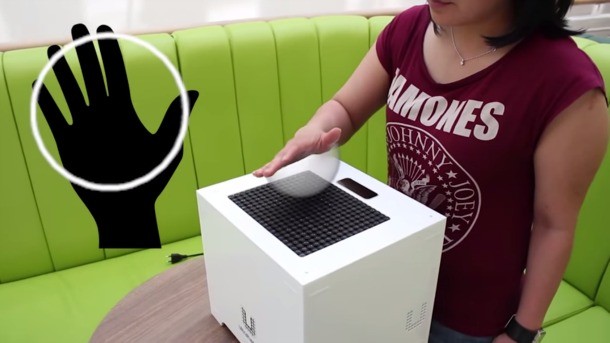Our extra-large special edition is here. Subscribe today and receive the 25% longer issue at no extra cost!
Ultrasound May Be The Answer To VR’s Tactile Troubles

The conundrum of providing users physical feedback from virtual reality has seemed like a sci-fi dream for years, but British company Ultrahaptics’ new technology may change all that.
Co-developed by Professor Sriram Subramanian at the University of Bristol, the technology focuses points of ultrasound that create the sensation of touching a virtual object. The project recently received a £600,000 investment, which allowed the expansion of the number of points able to be created. More points, in turn, means greater detail for the simulated objects.
Check out the video below of the technology during development at the University of Bristol.
Ultrahapics hasn’t announced any explicit applications for its prototype technology, but they have speculated about areas where it could potentially be applied. Professor Subramanian believes touch-free devices will soon be ubiquitous, and feels the technology could provide the missing link that makes them more viable. Ultrahaptics itself has also said it believes the technology could be paired with something like a CT scan to allow doctors to physically interact with diseases like tumors.
[Source: Reuters]
Our Take
Anyone who has used a projection keyboard, or even Microsoft's Kinect, knows how awkward interacting with purely virtual objects can be. This technology is far from complete, but it’s not hard to imagine how it could be implemented into a VR gaming environment via something like Microsoft’s HoloLens or any of the numerous headsets currently in production like the Oculus Rift.
Things like consumer-viable motion tracking still have a ways to go before the technology could be implemented in any sort of holodeck-style setup, but the ultrasound tech would provide a level of basic physical interactivity with a breadth and flexibility that physical peripherals can’t match. While it’s probably not the be-all-end-all solution to VR’s tactile feedback quandary, it dispels the notion that physical interaction with virtual objects isn't feasible.

Get the Game Informer Print Edition!
Explore your favorite games in premium print format, delivered to your door.
- 10 issues per year
- Only $4.80 per issue
- Full digital magazine archive access
- Since 1991









